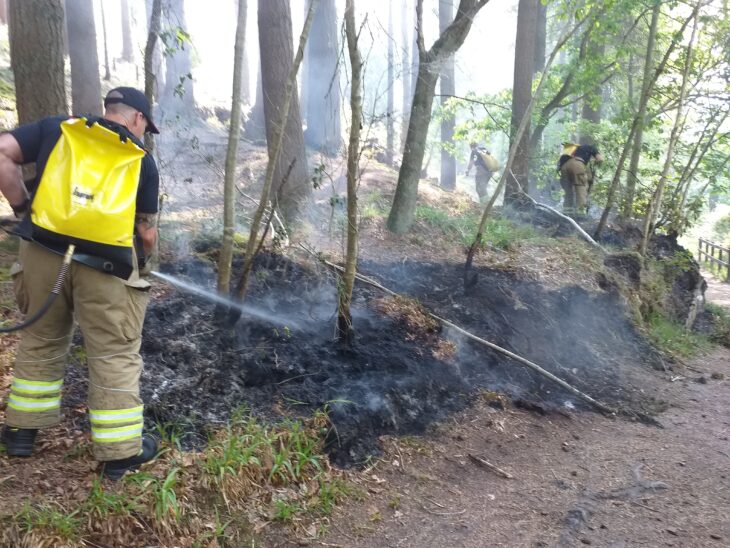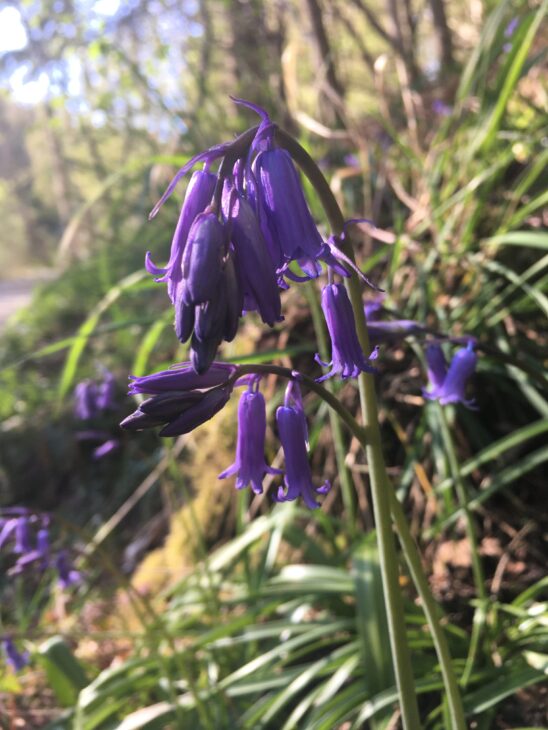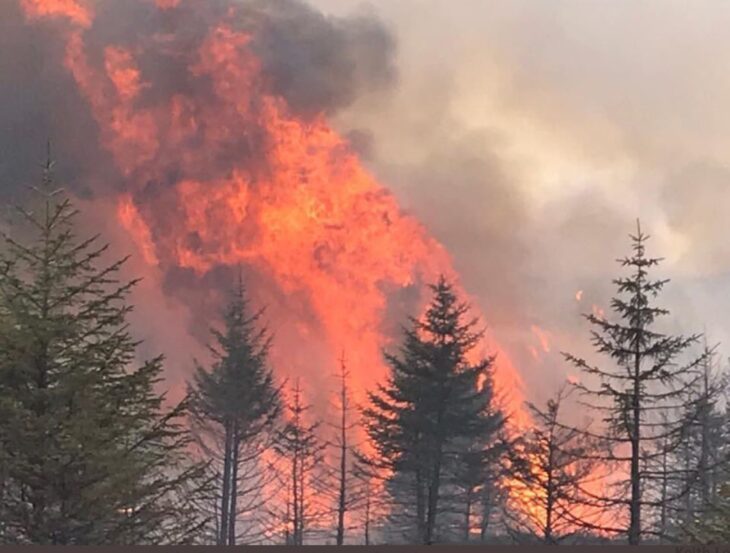The dangers of wildfires
The dangers of wildfires: how they start, what to do and the damage they cause.
In the past three weeks, the fire service have been out four times to the Falls of Clyde National Nature Reserve to extinguish wildfires.

How a wildfire starts:
The lack of rain over the past two months means there is no residual moisture in the top layer of the ground. The dry grasses and moss on the surface, have given the perfect conditions for sparks to ignite the ground cover and for the fires to burn the under-layer of peat, which can go on smouldering for days.
Whilst it is difficult to know the cause of the fires, there are some potential sources, discarded cigarette ends, disposable barbecues which heat up the ground below and glass bottles magnifying the sun’s rays. It only takes the careless action of one person to destroy valuable habitat. The woodland at the Falls of Clyde is an ancient woodland (which means it has been home to woodland at least since 1750) and is home to some rare and charismatic plants and animals such as our native bluebell, Hyacinthoides non-scripta, and a thriving population of badgers, Meles meles.

What to do:
The advice from the Outdoor access code in relation to fires is, “never light an open fire during prolonged dry periods or in areas such as forests, woods, farmland or on peaty ground or near to buildings or in cultural heritage sites where damage can be easily caused. Heed all advice at times of high risk.”
The Fire Danger Assessment gives the level of fire risk for Scotland and their latest update can be found at the bottom of the page by following this link: Scottish Wildfire forum.
If you see a fire in the countryside, however small, the advice from Fire Scotland is to call 999 immediately. More information can be found in their wildfires leaflet.
If possible, a call to the staff on the reserve would also be beneficial, detailing location and size of the fire. Access to particular parts of nature reserves may be difficult and so our staff may be best placed to assist with access for the fire service.
Damage caused:
We were very lucky at Falls of Clyde, that visitors alerted the emergency services quickly, in a time when most of our staff are working from home due to restrictions imposed by Covid19. This meant the fire damage was limited to small areas.
Unfortunately this was not the case in Dumfries and Galloway Forest Park back in April, where a wildfire spread over 15km, causing devastation to 4000 hectares of moorland and forestry.

We are indebted to the work of Lanark Fire Service for extinguishing these fires, but in the times of Covid19, all front line services are stretched and so we must do our best to reduce the pressure put upon them. Looking after our wild places is a responsibility of all who visit them, so please do your bit to help, do not light fires or use disposable barbecues when the fire risk is high, extinguish your cigarettes properly and take ALL of your litter home.
Clare Toner, Clyde Valley Ranger
Help protect Scotland’s wildlife
Our work to save Scotland’s wildlife is made possible thanks to the generosity of our members and supporters.
Join today from just £3 a month to help protect the species you love.
Preface
The dangers of wildfires: how they start, what to do and the damage they cause. In the past three weeks, the fire service have been out four times to the …
